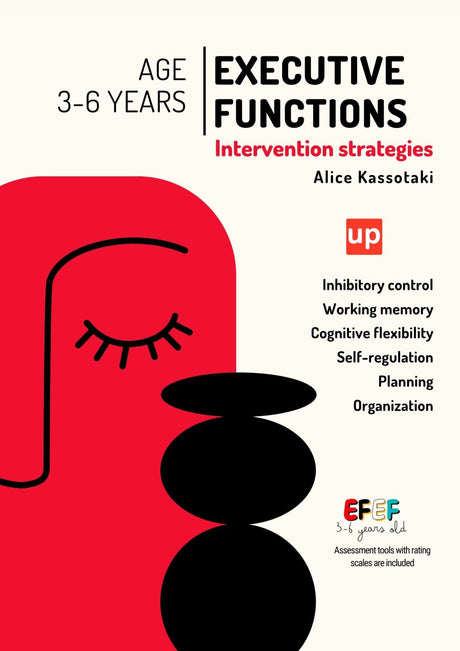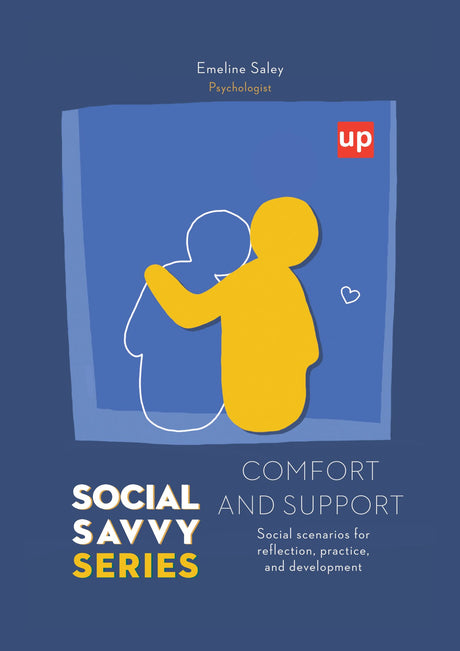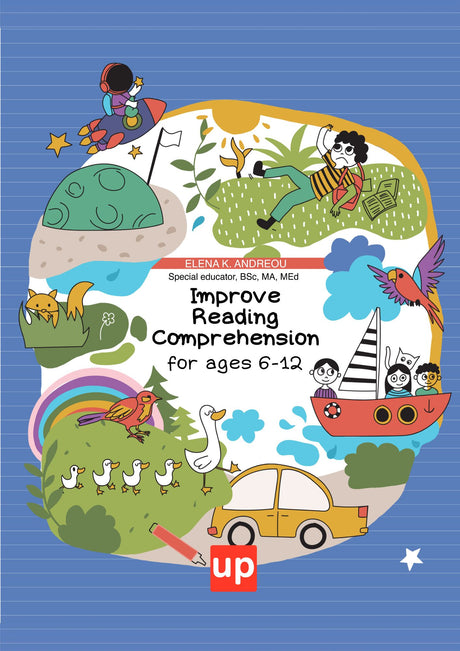A functional communication skills checklist is a vital tool for assessing and improving communication skills. It helps track progress, identify areas that need improvement, and support individual communication needs. This article will explore the components of such a checklist, including receptive language skills, expressive language skills, and non-verbal communication.
Key Takeaways
- Functional communication skills are essential for individuals with autism, facilitating effective expression through various methods beyond verbal language.
- A functional communication skills checklist is crucial for monitoring progress and identifying areas for improvement, incorporating receptive, expressive, and non-verbal communication components.
- Practical teaching strategies, such as using visual cues and integrating communication skills into daily routines, are vital for enhancing functional communication and promoting independence.
Understanding Functional Communication Skills

Functional communication skills are pivotal in enabling individuals, particularly those with autism spectrum disorder, to write their needs and thoughts through various forms of behavior, not just verbal language, despite the difficulties they may face. These functions are essential for effective communication.
These skills encompass a wide range of communication methods, including:
- gestures
- facial expressions
- sign language
- assistance technology
The ability to communicate functionally transforms the lives of engaged adults with autism, improving their interactions with their environment and promoting their overall success and well-being.
One of the key tools in assessing functional communication abilities is the Communication Matrix, an assessment tool specifically designed to support individuals with severe communication disorders in their self-expression journey. This tool provides invaluable insights into a person’s communication status and progress, helping educators and caregivers tailor their approaches effectively. Emerging communication skills are often inconsistent and may occur only when prompted or in limited contexts. Recognizing these early skills is crucial for fostering more advanced communication abilities.
Understanding functional communication not only involves recognizing the various forms it can take but also appreciating the profound impact it has on individuals’ lives. Enhancing the ability to interact meaningfully with others lays the foundation for greater independence and a higher quality of life, ultimately shaping the way we gain connect in any form.
Components of a Functional Communication Skills Checklist

A functional communication skills checklist serves as a vital tool for identifying and monitoring various communication abilities. It helps track progress and pinpoint areas needing improvement. This checklist is typically used by special education teachers, speech-language pathologists, and educational support staff to report on students’ abilities. The checklist is essential for a comprehensive assessment and development of communication skills.
The checklist should cover various components such as receptive language skills, expressive language skills, and non-verbal communication. Each of these components plays a critical role in the overall functional communication profile of an individual. Let’s delve into these components to understand their significance better.
Receptive Language Skills
Receptive language skills are fundamental to effective communication. These skills involve a child’s ability to comprehend verbal and nonverbal cues, understand basic concepts, and follow commands while responding appropriately.
Assessing these skills includes evaluating how well a child can:
- Follow instructions
- Comprehend different sentence structures
- Understand spoken instructions
- Recognize key vocabulary
These are critical components of these assessments.
The importance of receptive language skills cannot be overstated, as they allow individuals to engage more effectively in communication and follow directions in daily life. By developing strong receptive language abilities, individuals can better understand and respond to their environment, paving the way for more meaningful interactions.
Expressive Language Skills
Expressive language skills are equally crucial, as they enable individuals to convey their thoughts, needs, and desires effectively. Effective evaluation of these skills examines a child’s capacity to formulate requests and utilize context-appropriate language. It is essential to determine whether these behaviors are mastered or emerging, as this distinction helps in tailoring interventions. Children use various behaviors to express messages, making it important to assess a wide range of expressive abilities.
Assessing expressive language skills involves observing how children use language in different contexts, whether through speaking, writing, or other forms of expression. This comprehensive approach ensures that all aspects of a child’s communication abilities are considered, leading to more effective support and development.
Non-Verbal Communication
Non-verbal communication is another critical component of functional communication skills. Children often express their needs and thoughts using a range of verbal and non-verbal strategies, including gestures and facial expressions. To effectively evaluate these skills, it is crucial to observe a child’s use of gestures, sounds, and single words to convey needs and preferences. Through these methods, children attempt to communicate their needs, even if they face challenges with verbal language.
Visual aids, such as pictures and symbols, can significantly improve comprehension and expression for individuals with communication challenges. These aids help bridge the gap between understanding and expression, making communication more accessible and effective.
Creating Your Own Functional Communication Skills Checklist

Creating a customized functional communication skills checklist involves several steps:
- Start by identifying specific communication needs based on individual abilities and challenges.
- Involve caregivers or therapists in the checklist creation process to ensure it reflects realistic expectations and goals.
- Include various communication domains such as requesting, commenting, and social interaction in the checklist to ensure a comprehensive approach.
Regular reviews and revisions of the checklist adapt to the individual’s progress and changing communication needs. This dynamic approach ensures that the checklist remains relevant and effective over time. By tailoring the checklist to the individual’s unique communication profile, caregivers and educators can provide more targeted and effective support.
Developing this checklist is a collaborative effort requiring input from various stakeholders. This process not only enhances the effectiveness of the checklist but also ensures that it aligns with the individual’s real-life communication needs and goals.
Practical Strategies for Teaching Functional Communication Skills

Teaching functional communication skills requires practical strategies that foster effective expression and independence. These skills are particularly essential for individuals with autism, as they enable them to express their needs and desires more effectively. Effective teaching strategies include modeling, prompting, and reinforcement, which create a supportive learning environment.
Incorporating turn-taking games into family activities can foster communication and social skills, while using visual aids during everyday tasks enhances understanding. Encouraging choice-making at mealtimes allows parents and children to practice decision-making and verbally express their wants, enhancing communication skills through discussion.
Using Visual Cues
Visual cues are essential tools that can significantly support communication, particularly for individuals with communication challenges. Utilizing visual supports or example to clarify the skills being assessed in the checklist makes it user-friendly. Visual cues help individuals focus on the task at hand and provide clear directions, making communication more accessible and effective.
Incorporating visual cues into everyday interactions enhances communication abilities for individuals with complex needs. These cues provide a visual representation of concepts, making them easier to understand and follow, including the importance of eye gaze.
Role-Playing and Real-Life Scenarios
Role-playing and real-life scenarios are powerful strategies for teaching functional communication skills. Engaging in role-playing activities allows learners to practice communication in a safe environment, promoting confidence and skill retention. These activities help individuals practice communication techniques and develop social skills in a controlled setting.
Practicing these skills in real-life scenarios reinforces learning and reduces communication-related anxiety. By creating opportunities for role-playing and real-life practice, caregivers, educators, and the teacher can help individuals become more confident and effective communicators, enhancing their performance.
Data Collection and Progress Tracking
Data collection and progress tracking are crucial for evaluating the effectiveness of communication training interventions. Regularly documenting communication progress allows educators and families to assess the effectiveness of interventions and modify strategies as necessary. Collecting data systematically helps educators evaluate the effectiveness of interventions and make necessary adjustments.
By regularly tracking communication progress, caregivers and educators can identify effective strategies and inform necessary adjustments to interventions. This approach ensures that communication training remains dynamic and responsive to the individual’s needs.
Integrating Functional Communication Skills into Daily Routines

Integrating functional communication skills into daily routines is essential for reinforcing learning and making practice more natural. Implementing structured routines can significantly enhance a child’s ability to communicate effectively. Embedding communication activities within daily routines helps reinforce learning and makes practice more natural.
Creating a consistent routine allows children to anticipate and engage in communication opportunities throughout the day. This approach enhances communication skills and promotes independence and confidence that was created.
Resources for Families and Professionals
A comprehensive functional communication checklist is essential for assessing and developed communication skills effectively.
The checklist should encompass various skills categories, including:
- Sensory-motor
- Attentiveness
- Receptive language
- Expressive language
- Pragmatic/social language
Including areas such as student strengths, specific academic communication needs, and progress over time ensures a holistic approach.
Utilizing a robust checklist aids in tailoring communication strategies to individual needs and tracking development effectively. By leveraging these resources, families and professionals can provide more effective support to individuals with communication challenges.
Upbility offers a wide array of resources and tools designed to enhance functional communication skills for individuals with autism spectrum disorder and other communication challenges. With expertly crafted materials, such as the functional communication skills checklist, Upbility supports educators, speech-language pathologists, and families in developing effective communication strategies tailored to individual needs. By providing comprehensive guides and interactive resources, Upbility empowers caregivers and professionals to foster successful communication outcomes, promoting independence and improving quality of life.
Summary
Functional communication skills are the cornerstone of meaningful interactions and personal independence. By understanding the components of a functional communication skills checklist and employing practical strategies for teaching these skills, caregivers and educators can make a significant impact on the lives of individuals with communication challenges.
As you embark on this journey, remember that effective communication is a dynamic and evolving process. Use the strategies and resources provided to support continuous development and celebrate the progress made along the way. Empowering individuals with functional communication skills opens the door to a world of possibilities and enriched experiences.
Original content from the Upbility writing team. Reproduction of this article, in whole or in part, without credit to the publisher is prohibited.
Frequently Asked Questions
What are functional communication skills?
Functional communication skills are essential abilities that help individuals convey their needs and thoughts using different means beyond verbal language, facilitating effective interaction in daily life.
Who typically uses a functional communication checklist?
A functional communication checklist is typically used by special education teachers, speech-language pathologists, and educational support staff to assess students' communication skills and identify areas for improvement.
How can visual cues support communication?
Visual cues are vital for enhancing communication, particularly for those facing challenges, as they offer clear directions and help maintain focus. This clarity can facilitate more effective interactions and understanding.
Why is data collection important in teaching communication skills?
Data collection is essential in teaching communication skills as it enables the evaluation of training effectiveness and informs necessary modifications to strategies. This ongoing assessment helps to ensure that educational interventions meet the needs of learners.
How can functional communication skills be integrated into daily routines?
Functional communication skills can be effectively integrated into daily routines by incorporating structured activities into everyday tasks, which reinforces learning and promotes natural practice. This approach not only enhances communication abilities but also makes them more relevant in real-life situations.
References
-
American Speech-Language-Hearing Association. (n.d.). Augmentative and Alternative Communication (AAC). Retrieved from https://www.asha.org
-
Beukelman, D. R., & Mirenda, P. (2013). Augmentative and Alternative Communication: Supporting Children and Adults with Complex Communication Needs. Baltimore, MD: Paul H. Brookes Publishing Co.
-
National Institute on Deafness and Other Communication Disorders. (n.d.). Communication Problems in Children with Autism Spectrum Disorder. Retrieved from https://www.nidcd.nih.gov
-
VCU Autism Center for Education. (n.d.). Functional Communication and Autism. Retrieved from https://vcuautismcenter.org
-
World Health Organization. (2021). International Classification of Functioning, Disability and Health (ICF). Retrieved from https://www.who.int/classifications/icf/en/
-
Wetherby, A. M., & Prizant, B. M. (2002). Communication and Symbolic Behavior Scales Developmental Profile (CSBS DP). Baltimore, MD: Paul H. Brookes Publishing Co.
-
Yoder, P. J., & Stone, W. L. (2006). Randomized Comparison of Two Communication Interventions for Preschoolers with Autism Spectrum Disorders. Journal of Consulting and Clinical Psychology, 74(3), 426-435.









